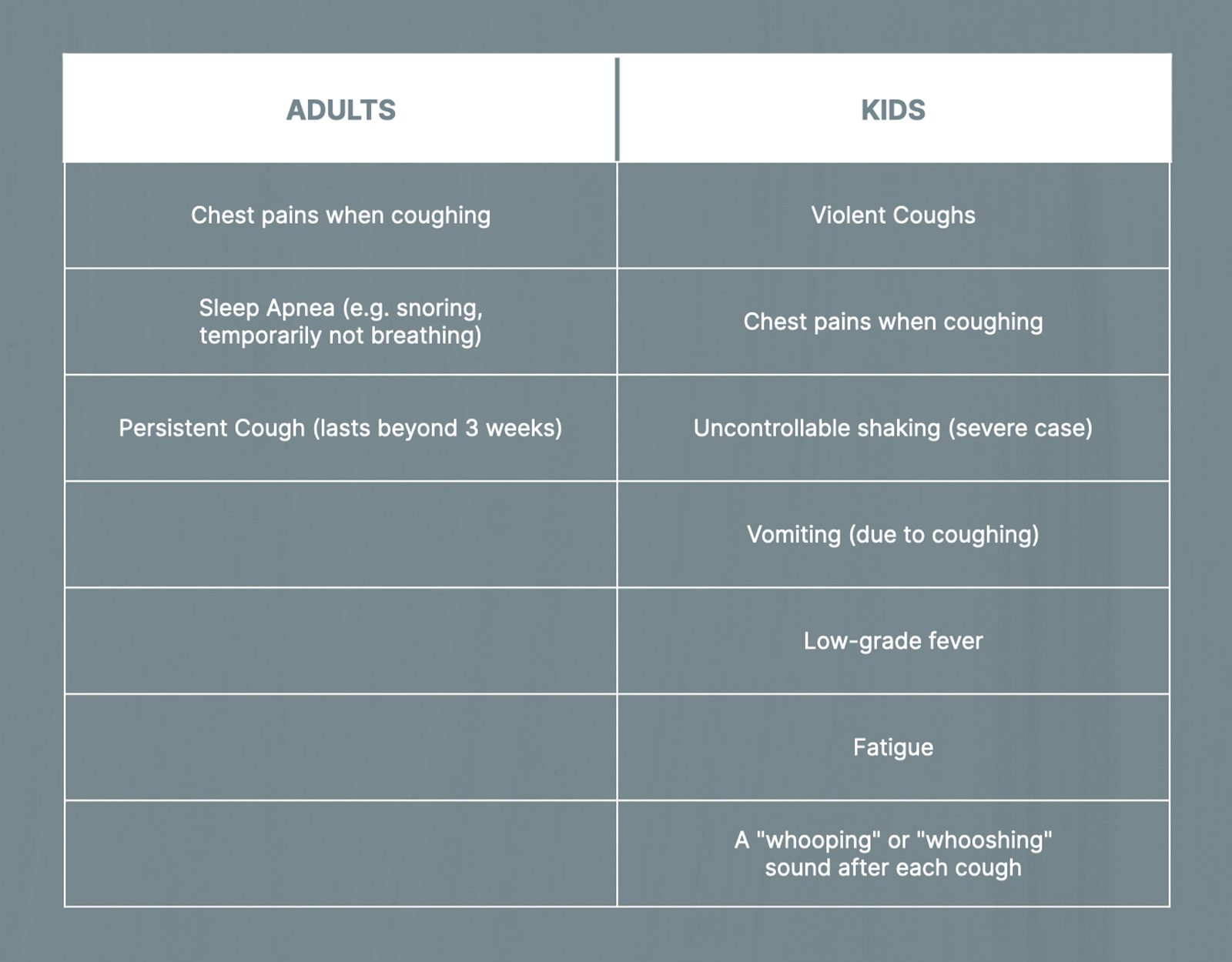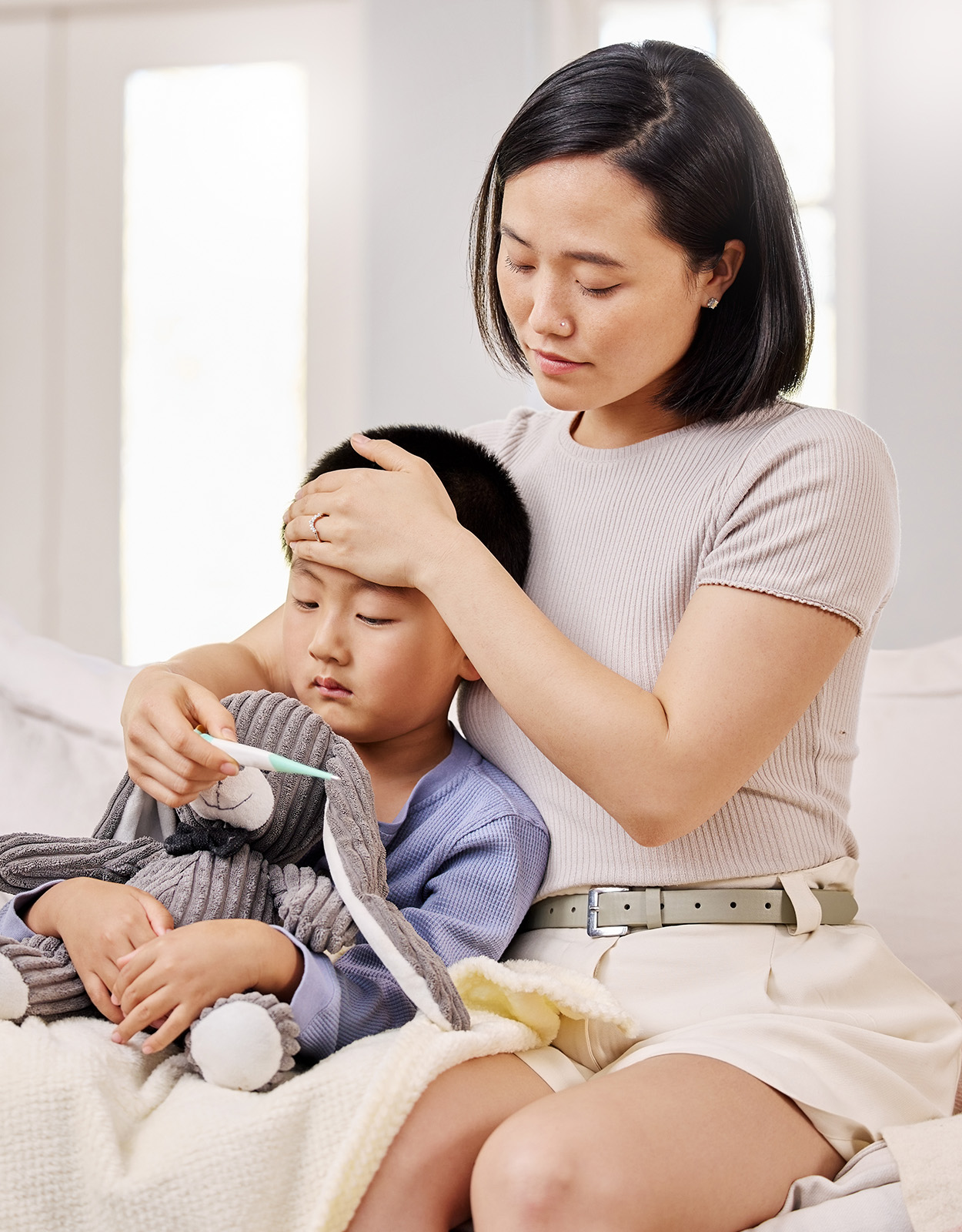Kids
Understanding Whooping Cough: What Parents Can Do When Their Kids Get It
Whooping cough may seem like the usual cough and cold, but it is much worse than that. Here’s everything you need to know about managing it, especially with the recent outbreak.
Whooping cough is the new “bug” flying around that parents need to watch out for. In recent news, Quezon City has even declared an outbreak in the area that resulted in 23 cases and 4 deaths!
Although the disease has been making its way around since January 1, 2024, the disease is known to be deadlier for babies and young kids. And while we, as parents, may not experience the full effects, we can bring it home to our kids because we go out to all sorts of places.
Here’s everything we know about whooping cough.
What does Whooping Cough look like?
The thing with whooping cough is that it looks like the typical cough and cold at first. But over time, the cough can become more severe, and infected people can even develop a distinct “whooping” sound when trying to breathe in after coughing fits—hence the name.
We usually see it in people when they start badly coughing and hacking—to the point that they sound like they’re going to throw up. Unless they’re sick with something else, they don’t usually have fevers or any other discomfort besides the cough. It also shows up like one of those nasty coughs that refuse to go away, lasting over 3 weeks (Decker and Edwards, 2021; Mulla, 2021).

In babies and younger kids, however, the results are more fatal. Because they have weaker immune systems and can’t take antibiotics normally, they often end up shaking uncontrollably, suffocating, and choking as their lungs try to expel the bacteria. Sometimes, it makes babies stop breathing because their lungs are exhausted from trying to fight off the germs (Fry, Campbell, and Amirthalingam, 2021).
Is there a cure?
Since it’s a disease caused by bacteria or germs known as Bordetella pertussis (hence why it’s also called pertussis), doctors usually treat whooping cough with antibiotics (Decker and Edwards, 2021).
Unfortunately, over the years, the bacteria have developed what scientists call antibiotic resistance—a scenario when the current antibiotic medicines can’t cure or get rid of the disease. However, this only happens when we don’t complete the antibiotic cycle of 7 days. Even if we look well, take it still. Otherwise, the bacteria will learn how to resist it (Livermore, 2005; Munita and Arias, 2016; Larsson and Flach, 2022).
Because bacteria are alive, they can fight back. Some bacteria respond to the medicine by making a “pipe” or “pump” to flush out the antibiotic. Other bacteria create something known as an enzyme — it’s a chemical that can shut off the medicine. It’s kind of like how we drink a lot of milk or water after eating something so numbingly spicy (Livermore, 2005; Munita and Arias, 2016; Larsson and Flach, 2022).
But because of how badly it affects kids, some doctors do offer vaccines for whooping cough (Fry, Campbell, and Amirthalingam, 2021; Mulla, 2021). You’ll need to ask your pediatrician when’s the best time to get it.
Other ways parents can fight off whooping cough
While the antibiotic is doing its work, we’ll focus on making our kids comfortable. Some of these ways include the following:
- Drink a lot of soup and fluids. Since our kids will be throwing up every so often, soup and fluids will make sure they get the nutrients they need. Some parents even add ginger, garlic, and pepper—along with their favorite noodles and soup flavoring—to their soup to help them purge out all that mucus and phlegm. To incorporate more protein into their meals, we suggest mixing the eggs in like you would for egg drop soup.
- Wear a mask. Masks have filters that keep the bacteria away from our babies and kids. It may feel like the pandemic all over again but we’d rather be safe than sorry. And given how infectious whooping cough is—to the point where you can catch it when an infected person coughs or sneezes—then all the more you need to stay protected.
- Throw away the tissues and wipes we or the kids coughed in…properly! Always practice good hygiene. Although the tissue and wipes catch the mucus and phlegm, leaving those out can cause the bacteria to spread to our kids, especially if they touch it and then put their hands in their mouths.
- Opt for a temporary work-from-home setup. Crowded workplaces, especially those in enclosed spaces, are the perfect place for whooping cough to spread. If you know your baby hasn’t had the whooping cough vaccine, make arrangements with HR to stay at home, reminding them that whooping cough kills kids faster than it does adults. On the company side, log-in systems have records so they can use that temporarily until they return to the office.
Some parents also give lozenges to help with the cough, since they taste sweet and can fool their kids into thinking that it’s candy. Others have their kids use a nebulizer to keep their pathways clear.

Whooping cough may not be deadly to adults, but it is for kids!
Diseases don’t always have the same effects on adults and kids. They can sometimes just give us a mild cough but cause others to shake because they feel “chilly” or throw up because their bodies are trying to remove the bacteria.
But what makes this deadly for kids is that they don’t have enough resistance and antibodies to fight off diseases just yet. While there are vaccines to protect people against whooping cough, the disease can still hit vulnerable people like infants who are too young to be fully vaccinated.
If, however, your child is old enough and strong enough to have the vaccine, let him or her have it. The whooping cough vaccine is part of the routine childhood vaccination schedule, usually paired with vaccines for diphtheria and tetanus (DTaP vaccine). As for teenagers and adults like yourselves, it is highly recommended to take booster shots to help maintain immunity and prevent whooping cough from spreading.
As always, prevention is still the best. Keep the masks on, throw dirty tissues and wipes properly, and always have a good and nutritious meal when you can.
References
Decker, M. D., & Edwards, K. M. (2021). Pertussis (whooping cough). The Journal of Infectious Diseases, 224(Supplement_4), S310-S320.
Fry, N. K., Campbell, H., & Amirthalingam, G. (2021). JMM Profile: Bordetella pertussis and whooping cough (pertussis): still a significant cause of infant morbidity and mortality, but vaccine-preventable. Journal of Medical Microbiology, 70(10), 001442.
Larsson, D. G., & Flach, C. F. (2022). Antibiotic resistance in the environment. Nature Reviews Microbiology, 20(5), 257-269.
Livermore, D. M. (2005). Minimising antibiotic resistance. The Lancet infectious diseases, 5(7), 450-459.
Mulla, E. (2021). Whooping cough in adults. InnovAiT, 14(4), 266-267.
Munita, J. M., & Arias, C. A. (2016). Mechanisms of antibiotic resistance. Virulence mechanisms of bacterial pathogens, 481-511.
More about diseases?
Why We Should Protect Our Kids and Babies From Pneumonia
What We Know About Shingles Awareness Week in 2024
Caught The Flu Bug? Here’s What To Do!





